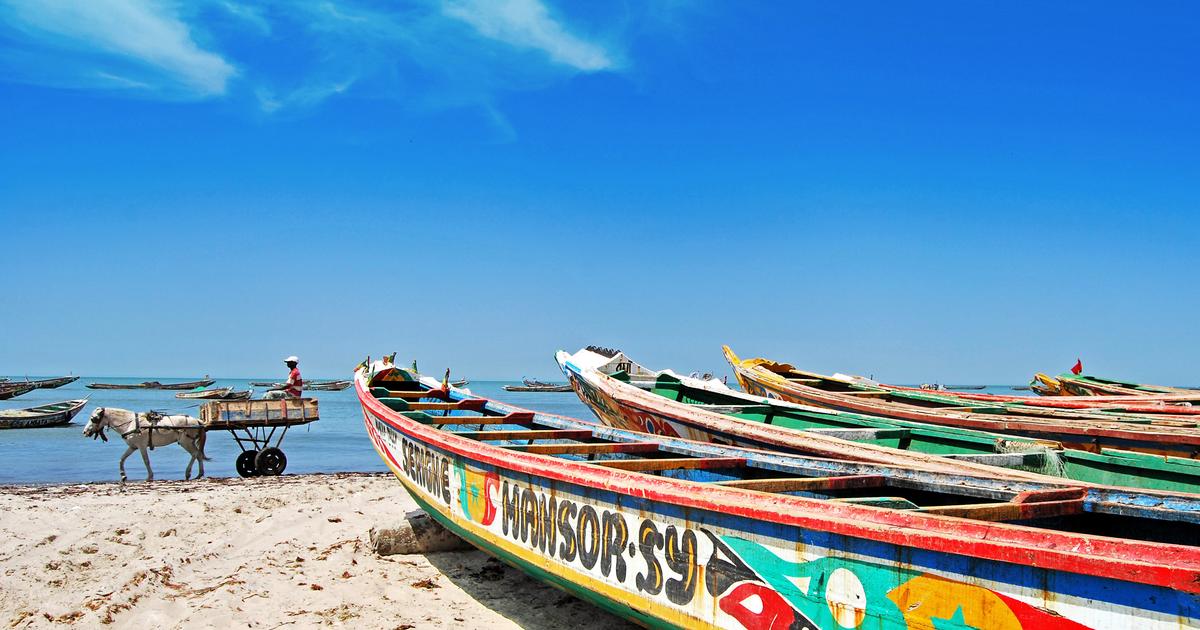Located in the subequatorial climatic zone, Senegal has a tropical climate, marked by variations between its northern and southern regions.
The north of the African country, dry and desert, experiences a rainy season from July to October.
Wetter, the south is characterized by heavy rainfall between June and November.
The average temperature fluctuates between 23°C and 28°C in winter while the mercury can climb up to 35°C in summer.
The best time to visit Senegal is the dry season, which runs from October to March.
To discover
Trips to Africa: tailor-made tours, hotels and stays from our partners
When is the best time to go to Saint Louis and northern Senegal?
During your visit to the Langue de Barbarie National Park, you can observe pink flamingos and white pelicans.
Jana
Lively and colorful, Saint-Louis is the former capital of Senegal.
A walk along the Quai Henry Jay reveals the architecture of colonial houses with wooden balconies, each with a story to tell, such as the Maison des Signares.
To reach the city center, you have to cross the Pont Faidherbe, 500 m long and one of the main symbols of Saint-Louis, where the average temperature is 31°C all year round, with peaks of 35°C in November.
About twenty kilometers further south is the Langue de Barbarie National Park, where you can observe many species of birds during the wet season, in particular pink flamingos and white pelicans.
Read alsoA more eco-responsible safari in Africa is possible!
When is the best time to go to Dakar and central Senegal?
In the Bay of Dakar, the island of Gorée is listed as a UNESCO World Heritage Site.
mariesacha
The center of Dakar revolves around the Place de l'Indépendance, from where the main streets of the capital start, where the mercury fluctuates between 25°C and 31°C from October to March.
In Soumbedioune, on the Grande Corniche, are the workshops of craftsmen working with wood and textiles.
From here you will have a view of the harbour, with its constant bustle of boats returning from fishing.
Dakar also has several large markets: the Kermel Market, near the port;
the Sandaga Market, at the end of Avenue Georges Pompidou, and the Tilène, in the heart of the Medina.
Soweto Square is home to the IFAN Ethnographic Museum, where masks, statues, grave goods, jewelry and musical instruments from various parts of West Africa are displayed.
On the island of Gorée, a UNESCO World Heritage Site and accessible by frequent ferries from the port, be sure to visit the Maison des Esclaves.
The colonial atmosphere of the place, with its sandy streets and brick houses surrounded by bougainvillea, favored the arrival of many artists, painters, sculptors and musicians.
In the surroundings of the capital, you can visit the fishing village of Hann, the pink lake (so called because of its high saline concentration) and the village of Joal, known for its coconut palms and oysters.
SEE ALSO
- Senegal: an express train to put an end to traffic jams in Dakar
When is the best time to go to Casamance and southern Senegal?
While strolling on the beach of Cap Skirring, you will be able to come face to face with these cows which live there in freedom.
Travel Nerd
The Casamance region has some of the most beautiful beaches in Senegal, especially those located around Cap Skirring, where you can swim in water at 28°C between October and December.
Just to the north is Diembéring, a quiet beach near the Basse Casamance National Park where you can bask on the golden sands.
The Siné-Saloum National Park is formed by the delta of the eponymous river, which is dotted with villages living from fishing and collecting shellfish and oysters.
Many monkeys have taken up residence there and birds can be observed up close during the wet season.
The villages of Dijfere, Palmarin, Ndangane and Foundiougne are good starting points for visiting the region, especially through canoe excursions in the marshes.
Niokolo-Koba National Park, which is on UNESCO's list of endangered sites, is Senegal's largest park.
Accessible from Tambacounda, it is home to more than 80 species of mammals, including elephants, lions, leopards, antelopes, hippos, crocodiles, buffaloes and monkeys.













